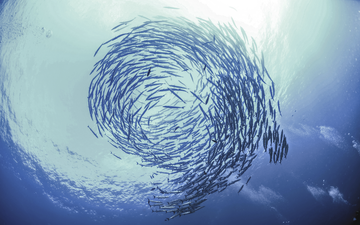- Official BOC UK Online | Industrial Gases | Products & Solutions | BOConline UK
-
Shop
- Industries
- Processes
- Gases & Equipment
-
Solutions
-
Services
-
Health & Safety
-
Contact & Support
- What's Happening
-
Net Zero Strategies
Healthier Water, Healthier Fish and Healthier Farms
Posted by BOC

Take a fresh approach to aquaculture oxygenation to improve fish farm health in three dimensions.
Oxygen is good for fish. There’s no debate or doubt there. The challenge is finding the right balance of oxygen to create healthier fish and more productive farms.
Improved oxygenation can help tackle many of the challenges facing farms today, including rising sea temperatures, algal bloom and during the treatment of sea lice and other diseases.
The unique characteristics of every farm mean a simple plug-and-play approach won’t achieve the balance necessary to increase growth rates and maintain financial viability. But an approach that considers each farm individually, across the three dimensions of water, fish and financial health can really make a difference.
Creating fish health through water health
Oxygen saturation levels can make a significant difference to fish welfare while boosting growth.
Maintaining dissolved oxygen levels above 90% is key, with metabolism affected when it falls below 85%, and big losses in appetite below 75%. When the oxygen saturation drops to 60% we see steep increases in the death rate. (1)
On farms where the oxygen concentration is optimal, timely and well controlled, growth rates increase and growth periods shorten, even in higher stocking densities.
Perhaps most crucially of all, oxygenation is playing its part in the ongoing fight against sea lice. While numbers in Scottish salmon farms fell slightly in 2020 – from 0.54 to 0.52 adult female lice per salmon (2) – the second lowest on record, the problem is still prevalent enough to lead the Scottish government to introduce mandatory weekly reporting. (3)
Many treatments, whether chemical, water or heat based, create heightened fish stress and can further increase risk to fish health. Emergency oxygenation can be challenging to deploy and inefficient in its performance. However, advanced oxygenation solutions can rapidly and easily boost oxygenation in treatment environments maintaining a pre set dissolved oxygen level, as well as during handling and harvesting, improving water quality and fish health when it’s needed most.
Making oxygen pay back
Pressure on the industry is intensifying as global demand surges and the political and economic landscape brings substantial operational challenges.
That’s where a focus on return on investment, or payback per molecule, is essential, much more so than the price of oxygen. The broad benefits of implementing advanced oxygenation systems that complement the unique characteristics of a farm are consistently seen in tailored oxygenation approaches. Such approaches can substantially improve metrics like feed conversion ratio (FCR). For example, an achievable reduction from 1.5 to 1 FCR can represent a drop in production costs of up to 20%.
Find your oxygenation solution
Ultimately, taking a more holistic approach to oxygenation means understanding where the greatest difference can be made with your investment.
We know that every farm is different, with sophisticated requirements based on a wide range of factors. That’s why BOC’s Aquaculture Team is on hand to discuss the different advanced oxygenation solutions available, so you can find the right balance in all three dimensions.
Get in touch with BOC’s Aquaculture Team to discuss the ideal oxygenation solutions for your farm.
